1. Bacchus-F
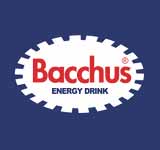
Bacchus-D is an energy drink by the South Korean company Dong-A Socio Group. Bacchus-D does not contain carbonic acid. The drink was launched in 1963 as Bacchus-F. The Bacchus drink comes from Kang Shinho. He studied medicine in Germany in the 1950s. He named the drink after the Roman god Bacchus, god of wine and the harvest after the Bacchus statue in City Hall saw. Bacchus first appeared on the market in 1961 as a tablet, before Kang converted it to Bacchus in 1963. Taurine and inositol are the main ingredient in Bacchus-D. The energy drink is very popular in South Korea. At first Bacchus was in pharmacies sold as a remedy for colds and hangovers. Similar to Red Bull, Bacchus is often mixed with alcoholic beverages such as vodka. The most popular variant is the Bacchus Bomb. A complete bottle of Bacchus is poured into a glass and a shot glass with vodka is sunk in it. It is drunk on ex.
2. XS Energy Drink
3. Bang Energy Drink

4. NOS

5. Rockstar energy drink

Rockstar (ROCKST★R) is an energy drink created in 2001. Rockstar is located in Las Vegas, Nevada, was founded by Russell Weiner. Sold in the United States, Canada, United Kingdom, Ireland, Germany, Spain, Japan, Hong Kong, Australia, Mexico, Malta, New Zealand, Netherlands, Finland, and Morocco. It currently has twenty varieties. The Rockstar energy drink is distributed in the United States and Canada by PBG (except in the Pacific Northwest and Northeast California, where Rockstar maintains distribution). In the United Kingdom and Canada, each can contains 160 mg of caffeine per 500 ml, so the legend had to be added: "This product contains caffeine. It is not recommended for children, pregnant or breastfeeding women or individuals sensitive to caffeine".
6. V8 +Energy

7. AMP Energy
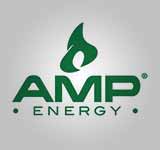
Amp Energy is an energy drink brand manufactured and owned by PepsiCo. When Amp Energy was first introduced in 2001, it was distributed under the Mountain Dew soft drink brand. Since 2009, it has been manufactured and labeled under its own independent trademark. The beverage is packaged in 16 ounce and 24 ounce cans and is sold in the United States, Canada, England and Lebanon. Since 2009, Amp Energy has been the number four energy drink brand in terms of total retail sales in the US.
8. BAWLS Guarana
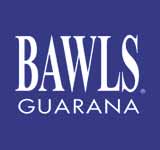
Bawls is an energy drink brand with extracts of guarana berries. This berry comes from the South American Amazon basin. Bawls Guarana is known for its high caffeine content. However, the amount of caffeine in the drink is actually comparable to 1.5 cups of coffee. In addition to the regular version, there is a sugar-free variant (Guaranexx), a cherry-flavored variant (Cherry Bawls), the Root-Beer variant (G33K B33R) and peppermint. Bawls Guarana was launched in the United States in 1996 and has since been sold in more and more countries. Available in BAWLS again in Europe since 2017, at Bawls-EU.
9. BEA Sparkling Energy Drink

10. Beaver Buzz

11. Blue Charge

12. Bob Ross Positive Energy Drink

13. Bomb Energy Drink
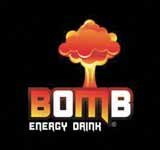
14. Burn

Like other energy drinks, it also contains a significant amount of taurine (an organic acid, which has traditionally been described as an amino acid in the scientific literature) which helps maintain attention. It has also accompanied by guarana, vitamins and ginseng. It has vitamins C, B12 and others. BURN SHOT is a variant, which is presented in a 50 ml container and with a higher percentage of caffeine added (80 mg/50mL). It does not need to be consumed or kept cold. Often, the benefits of these drinks are questioned due to the high concentration of stimulants they contain and excessive consumption is discouraged by most medical authorities as well as their consumption together with CNS depressants (Central Nervous System) such as alcohol. If mixed with medication it can be harmful to health.
15. Club-Mate

16. Coca-Cola Blāk
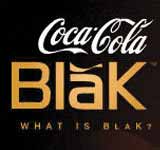
Coca-Cola Blāk was a soft drink with coffee extract that was introduced by Coca-Cola in 2006. The drink was first introduced in France, followed by the United States and Canada. With Blāk, Coca-Cola hoped to address a more mature market. Blāk was launched in the United States in April 2006, and in Canada on 29 August 2006. The product was launched with a premium price positioning, comparable to that of energy drinks. The American version of Coca-Cola Blāk was sweetened with glucose-fructose syrup, aspartame and acesulfame-K. In the French and Canadian versions of Coca-Cola Blāk, the glucose-fructose syrup was replaced by sugar. A taste test from the American Consumer Reports indicated that the French version was less sweet and contained more coffee flavor than the American version.
17. Cocaine (drink)

Cocaine is an energy drink sold by Redux Beverages, which is characterized by a very high proportion of caffeine. The drink contains 1,120 milligrams of caffeine per liter, more than three times as much as, for example, Red Bull, and more than usual strong coffee. Each can contains 280 milligrams of caffeine, which is over seven times more than the EU limit value for when a high-caffeine warning text is required. The jar's table of contents also states that it contains 760 milligrams of taurine, which is a common ingredient in energy drinks. Cocaine was banned in the United States when the FDA decided it was illegal to market it as both a drug and a food supplement. At the end of May 2007, it was reintroduced under the name "No Name", with room for the buyer to enter their own name on the drink. The drink is marketed in many countries in Europe and has always been called Cocaine.
18. Crunk Energy Drink

19. DUKE Energy Drink

20. Emerge Stimulation Drink
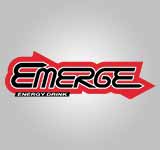
21. Enviga

22. Euro Shopper Energy Drink

23. Full Throttle
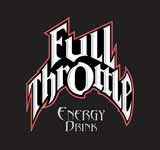
Full Throttle is an energy drink brand produced by The Coca-Cola Company and Monster Energy. In late 2004 he entered the United States and Canada under the former owner The Coca-Cola Company. He is known for sponsoring National Hot Rod Association competitions between 2008 and 2012. On June 12, 2015, Monster Beverage signed an agreement to buy The Coca-Cola Company's energy beverage line. Coca-Cola handed over ownership of all power businesses worldwide, including NOS, Full Throttle, and nine small brands to Monster. Monster, all its businesses except energy drink, Hansen's natural carbonated drinks, Peace Iced TeaWas transferred to Coca-Cola, including Hubert's Lemonade and Hansen's juice products.
24. Fyre Energy Drink

25. G Fuel

26. Gas Monkey Energy

27. Glacéau VitaminEnergy

28. Glitch Drink

29. Hell Energy

30. Hype Energy

31. Irn-Bru 32

Irn-Bru is a carbonated soft drink manufactured by the company AG Barr. The drink is distributed throughout Scotland, where it has its largest market share and is considered de facto as one of the most characteristic drinks in the area. In addition, it is marketed and distributed throughout the rest of the United Kingdom and in other countries such as the United States or Australia. The drink began to be produced in 1901 in Falkirk, and has since been characterized by a distinctive orange color. Irn-Bru is one of two soft drinks that compete directly in its territory against the two major brands of carbonated drinks, Coca Cola and Pepsi (the other is the Peruvian Inca Kola). In addition to the original version, Irn-Bru is sold without sugar and an energy drink known as Irn-Bru 32.
32. Jolt Cola

Jolt Cola is a cola with a lot of caffeine from the United States. Jolt was created in 1985 by CJ Rapp. It was initially marketed in a red aluminum can with horizontal blue stripes surrounding the can. The famous Jolt Cola logo has the word "JOLT" in white capital letters and a yellow ray that crosses the letter "O". The beginnings of Jolt Cola were quite controversial, especially among parents. Its first ads often employed advertising with sexual content seeking the attention of the market of young clients (probably male). The initial Jolt Cola formula contained more sugar than the current formula, but still contains as much sugar as other popular brands of cola. Jolt Cola has approximately an amount of caffeine similar to normal coffee (but not as much as espresso or other brewed coffees) and twice the amount of caffeine contained in a Coca-Cola, which is why one of its first slogans was "All the sugar, and twice the caffeine".
33. KA Reload Energy

34. Kickstart

35. Kona Gold Hemp Energy Drink

36. Kore

37. Kruidvat Power Booster
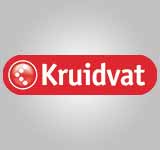
38. Lift Plus

Live+ is an energy drink marketed to New Zealanders by Monster Beverage. Originally known as Lift + or Lift Plus, it was created and produced by Coca-Cola Amatil. 2011, Coca-Cola Amatil claimed that the Lift Plus and Mother energy drink accounted for 20 percent of the New Zealand energy drink market or 3.7 percent of the non-alcoholic ready market. In 2018, the name was changed from Lift+ to Live + and ownership was transferred from Coca-Cola Amatil to Monster Beverage Corporation.
39. Lipovitan

Lipovitan (or the short form Livita or in Thailand Livo) is one of the Japanese pharmaceutical company Taisho Pharmaceutical Co., Ltd. licensed energy drink. In East Asia, it is usually sold in brown 100 ml bottles. The liquid has a yellowish hue and is marketed as a means to increase physical and mental performance. The main active ingredient is taurine, which stimulates the caffeine that is also contained. There is a complete product family called Lipovitan in Japan. Stronger variants such as Lipovitan D Super or Lipovitan-D Plus (in Thailand) clearly exceed the content of Red Bull's ingredients, for example with 2000 mg taurine and 300 mg arginine per 100 ml. Health authorities in different countries warn against taking these stronger products. The warning concerns not only the harmfulness of the extremely high sugar content, but also the danger that the stimulant effect can lead to death in cardiovascular diseases. Extremely strong products have already been banned in Thailand.
40. Liquid X

41. Lucozade Sport with Caffeine Boost

42. Monster Energy

43. Mother

44. Mountain Dew Energy

45. Mountain Dew MDX
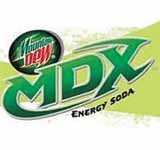
46. Mtn Dew AMP Game Fuel
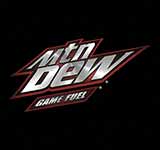
47. No Fear Energy

48. O'cean One8 Energy Drink
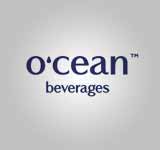
49. Paper Boat
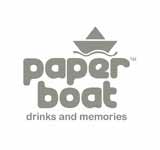
50. Pepsi Max
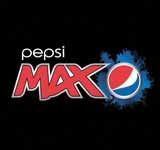
Pepsi Max is a zero sugar and calorie-free soft drink manufactured by PepsiCo as an alternative to Pepsi and Pepsi Light. A variant is this drink, with the same name but some different ingredients (such as ginseng and higher caffeine level), is sold in the United States. Its competition is Coca-Cola Zero, a sugar-free cola drink from The Coca-Cola Company that is marketed similarly. Pepsi Max debuted in the United Kingdom and Italy in April 1993. It expanded to Ireland the following September, and in France, Greece, Spain, Portugal, Netherlands and Australia, the month of December. At the end of 1994, Pepsi Max was sold in approximately twenty countries and a year later that figure had doubled.
51. Pussy

52. Quake Energy Drink
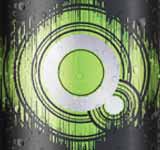
53. RELOAD

54. Raze Energy Drink

55. Red Rooster

56. Reign Total Body
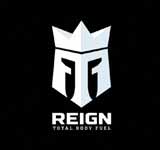
57. Relentless

58. Revo

Revo is a Ukrainian brand of non-alcoholic and low-alcohol energy drink. The non-alcoholic version of the drink is called Revo Energy, the low-alcohol version of Revo Alco Energy. A drink of the company "New Products" entered the Ukrainian market in 2007. The license is owned by the American company Red & Blue Beverages. Initially, the advertising company was developed by Euro RSCG Kiev. In 2000, the company entered the Russian market. In 2010, the PROVID advertising agency that shot the video for the company received a prize at the Kiev International Advertising Festival. In 2012, a limited collection of Revo Limited Edition in a new package was released. In 2016, the Revo Energy drink occupied 19% of the energy drink market in Russia.
59. Rip It

60. Semtex

61. Shark Energy
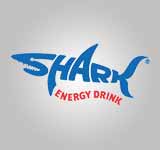
The Shark Stimulation, better known as Shark Energy, is an energy drink comes in many flavors, carbonated and non carbonated, sweetened and unsweetened. The drink is produced in Thailand by Osotspa Co. Ltd in Bangkok, and in Europe by Shark AG in Innsbruck, Austria. The drink was first produced in 1965, and was conceived from the same formula as Lipovitan, the first Energy Drink in the world. Shark Energy is often mixed with alcohol, such as vodka, and cocktails, although the consumption of Energy Drink associated with alcohol is considered at risk.
62. SoBe Adrenaline Rush

63. Sparks

64. Sting Energy Drink

The Sting Energy Drink is a brand of carbonated energy drink owned by PepsiCo International. It was first introduced in Nepal in 2002. It is available in three flavors, such as Gold Rush, Gold (with Ginseng), Power Pacq (Gold Rush with Malunggay), Power Lime (Kiwifruit/Lime) and Berry Blast (Strawberry).
65. Street King

SK Energy (formerly called Street King) is a flavored energy drink created by American rapper 50 Cent and Pure Growth Partners. To launch the product, the contractor joined forces with Pure Growth Partners founder and CEO Chris Clark. Through collaboration with the UN World Food Program, 10 cents of each bottle purchased go to food for African children. In New York, it is manufactured and distributed by Street King LLC. The drink is sold in 74mm stacks containing caffeine as in 1 cup of coffee. In September 2011, 50 Cent publicly announced its intention to donate 1 billion dinners to the World Food Program over a 5-year period. If it achieves this goal, it will become the 20th largest donor to the organization. Between September 2011 and January 2012, the rapper donated 3.5 million dinners.
66. Tab Energy

67. Uptime

68. Urge Intense

69. V

70. Vault

Vault was a sugary non-alcoholic beverage launched by The Coca-Cola Company in June 2005 and marketed until December 2011. It was launched as an artificially flavored hybrid energy drink. Coca-Cola Vault was marketing with the slogan "Drinks like a soda, kicks like an energy drink" started as energy drinks. The Vault was a citrus-flavored beverage containing many of the same ingredients as Coca-Cola Surge. Mello Yello, who was re-introduced in 2011, was stopped in favor. Addition, Coca-Cola controlled its interest in an established energy drink called Monster Energy. Due to the high cost of acquisitions, continuing to sell Vault would divert sales from a brand where they invested more money. Test marketing took place in a limited area from June 2005 to Labor Day 2005.
71. Venom Energy

72. Verve

73. Xtra Power Energy Drink

74. 5-hour Energy

The 5-hour Energy is a company in the business of drinks energy of the United States, was founded in 2001 by Living Essentials, according to the manufacturer, it does not contain sugar. The official website lists the active ingredients of 5-hour Energy as: vitamin B6, folic acid, vitamin B12, sodium, taurine, glucuronolactone, malic acid and N-Acetyl L-tyrosine, L-phenylalanine, caffeine, and citicoline.
75. Alani Nu Energy
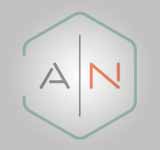
76. Red Bull

Red Bull is an energy drink distributed by the Austrian company Red Bull GmbH. It was created by Chaleo Yoovidhya and Dietrich Mateschitz in the 80s developing a unique marketing concept. The first can was sold on April 1, 1987 in its country of origin, Austria, being the launch not only of a totally new product but the birth of the category of energy drinks. The brand is present in more than 100 countries, and is the best selling energy drink in the world, with more than 6,000 million cans sold in a year (2017). It is also a company that sponsors extreme sports such as mountain biking, windsurfing, climbing, parkour, diving, skiing, wakeboarding among others. Red Bull Energy Drink is a functional drink that contains mainly water, sugar (sucrose, glucose), caffeine, taurine, as well as different vitamins (niacin, pantothenic acid, B6 and B12).
